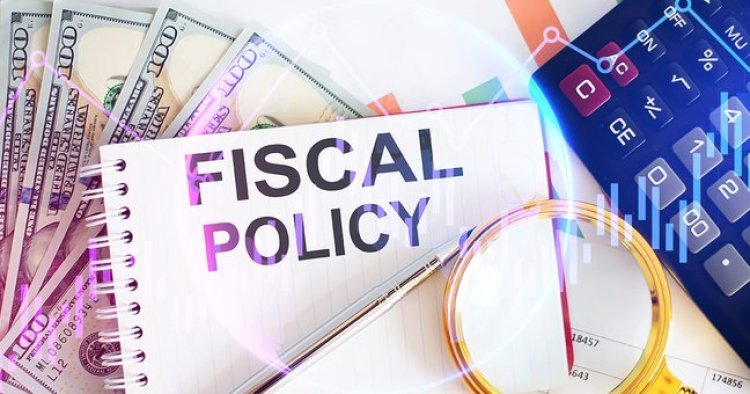Fiscal Policy in India : Meaning, Objectives, Instruments, Types, Tools
The government uses fiscal policy to steer the economy by controlling the inflow and outflow of tax revenue and public spending.

Fiscal Policy Meaning
Fiscal policy is the government's use of spending and tax policies to influence broad economic indicators including the job market, inflation, and consumer spending habits. These measures are being taken primarily to restore economic stability. Both fiscal and monetary policy actions are typically used together to achieve these macroeconomic goals.
Fiscal Policy encompasses all matters involving government revenue and spending. Budgeting and taxation are just two examples of fiscal policy measures that are used to solve the economy's most pressing issues. Following are the three pillars that make up India's fiscal policy. Government debt, spending, and tax receipts. With input from NITI Ayog, the Ministry of Finance determines national budgetary policy.
Fiscal Policy Objectives
1. Price Stability
Price controls across the board are the primary focus of this strategy. As a result, prices are stabilized during periods of inflation and economic downturns alike, and uniformity is maintained across the country.
The government ensures price stability by controlling the availability of necessities. As a result, it spends money on rationing and on maintaining a supply of cheap food and grains in stores. Utilities including transportation, water, and cooking gas are subsidized so that they remain affordable to the average person.
2. Complete Employment
Every country that wants to improve its economic status should make creating jobs its top goal. India has the world's largest population of children, making it more likely to progress. There are several domains in which today's youth excel beyond their elders' abilities. Therefore, if we were to achieve full or near-full employment, it would boost our economy to new heights. All decisions about the workforce are governed by fiscal policy. There are a variety of mechanisms by which the state generates new employment possibilities.
First, when government agencies are created, new employment opportunities arise. Two, it encourages production and employment growth by providing private sector incentives like tax cuts and reduced tax rates. In addition, it encourages the establishment of rural and cottage enterprises with the purpose of creating new jobs. Some ways to do this include providing them with tax breaks, subsidies, and low-interest loans.
3. Economic Growth
It is possible to increase the growth rate and help the country meet its needs through targeted fiscal policy actions. One method the government does this is through encouraging the development of heavy industries like steel, chemicals, fertilizers, and industrial machinery. Roads, bridges, railways, schools, hospitals, water and electricity supply, telecommunications, and so on are all examples of the kinds of infrastructures that are built as part of economic development.
Fiscal Policy Types
1. Expansionary Fiscal Policy
These are the policies adopted by various levels of government with the aim of increasing their monetary contributions to the general economy. As a result, it generates a lot of stuff. Additionally, it broadens opportunities for employment, boosting personal and public gains from the expansion.
2. Contractionary Fiscal Policy
This is the second type of fiscal policy. This strategy is used during prosperous times. However, there are times when the economy's rapid growth poses threats. In this case, the government is trying to halt the economic expansion. This helps keep inflation under control and economic growth under control.
3. Neutral Fiscal Policy
This fiscal policy is implemented when the national economy is stable. The ups and downs of the economy are a good sign. It includes governmental spending that is funded by taxes on individuals, corporations, or entire economic sectors. and it won't have any significant effect on the economy.
Fiscal Policy Instruments
1. Control Over Consumption
The national savings rate is increased in this way. As a result, it can be invested in the future economy of the country or utilized to make immediate purchases.
2. By increasing the rate of investment
To enhance the economy now and in the future, this strategy may be the greatest option. When people invest, their money isn't frittered away on frivolous things; rather, it's put to good use and grows in value over time. As a result, the country's economy will flourish in the years to come.
3. Infrastructure Development
A country's level of development is in large part determined by the quality of its infrastructure. Therefore, improving infrastructure is more important if we want to boost the economy.
4. Maximum taxes on Overseas products and Luxury Products
Some commodities directly imported into India from other countries are subject to levies of close to 100 percent. This maximizes the benefits of taxation for the country. It will also help domestic sectors by increasing demand for domestically produced items.
There are additional important factors to think about besides charging too much for some products because of their quality or other factors. The government's massive tax on luxury products is the primary reason for the price increase. Income from luxury goods, which are subject to this hefty tax, will be at a record high, which will have a negative impact on the economy.
Fiscal Policy Components
- Government Receipts
- Government Expenditures
- Public Accounts of India
1. Government Receipts
Taxes, interest, and the income gained through investments, cess, and other sources of revenue created by the government are all accounted for in these revenues. This is the sum of money the government receives from any and all sources.
Government revenue can be divided into two categories. Money Coming In A government receives income when it receives money that does not diminish its liabilities or enhance its assets. Taxes and other revenue streams can be accounted for independently. Non-tax revenues include interest and profits on government investments, as well as cess and other income. Tax revenues can be broken down into two main types: direct tax and indirect tax.
Capital Receipts
A capital reception is a payment from the government that changes the balance of assets and liabilities. The governments rely on these monies to function efficiently. Incoming cash flow is another form of capital receipt. If the government borrows money and then has to pay back the borrowing government, the borrowing government will issue what is called a debt receipt.
Payments that do not constitute a debt are called "non-debt receipts." About 75% of all funding comes from sources other than debt. The majority of capital inflows come from loans taken out by the public, some foreign governments, and the Reserve Bank of India.
Revenue Receipts
Payments that do not constitute a debt are called "non-debt receipts." About 75% of all funding comes from sources other than debt. The majority of capital inflows (RBI) come from loans taken out by the general public, some foreign governments, and the Reserve Bank of India itself.
2. Government Expenditure
Revenue Expenditures
These are one-time expenditures that must be paid either immediately or within a year. Since these fees are levied in order to pay for the government's ongoing operational expenses (OPEX), revenue expenditures are synonymous with OPEX. recurring expenditures for upkeep and repair of publicly owned assets. They are recurrent outlays, as opposed to the one-time nature of most capital investments. Electricity, rent, staff salaries, and taxes on government-owned land are only some examples.
Capital Expenditure
Expenditures made by the government to maintain or expand its infrastructure and generate revenue. Investing in equipment and other fixed assets that will last for a while. Therefore, capital expenditures are typically larger than revenue expenditures. Examples include spending on things like furnishings, building infrastructure, buying commercial goods, and purchasing manufacturing equipment.
3. Public Accounts of India (Public Debt)
The Public Account of India documents financial transactions in which the government plays no other role than that of a bank. This fund was set up under Article 266(2) of the Constitution. It factors in money movements associated with deals in which the government plays no other role than that of a bank. Minor savings, provident funds, etc. are all examples. The government can't keep these funds, therefore they'll have to be given back to their rightful owners. As a result, the government can make purchases without seeking Parliamentary approval.
Q) Who introduced fiscal policy?
John Maynard Keynes, a British economist, is widely credited with shaping modern fiscal policy. Instead of relying on the market to correct itself, Keynes proposed that governments intervene to dampen the effects of the business cycle and control economic production.
Q) What is fiscal policy and its features?
Fiscal policy, which refers to government efforts to maintain economic stability through changes in taxation and spending. Monetary policy is often employed in conjunction with fiscal policies.
Q) What is the meaning of fiscal policy?
Government spending and taxation are tools of fiscal policy, which is used to steer economic growth. Governments frequently employ fiscal policy in their efforts to foster robust and sustainable growth and lessen poverty.













.jpeg?updatedAt=1701534876521)





